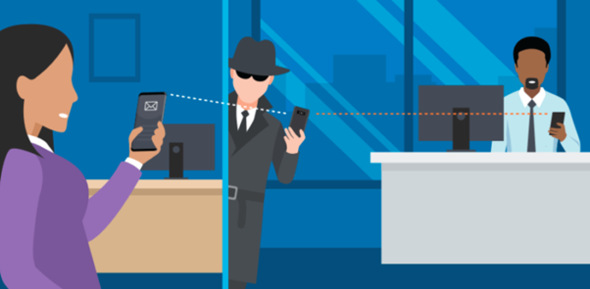How to Protect Yourself from Man-in-the-Middle Attacks | Safer Communication
Whether you’re sending sensitive work emails or having private conversations with friends and family, your data is vulnerable unless you take the necessary steps to protect yourself. In this article; we’ll show you how to reduce your risk of falling victim to a man-in-the-middle attack with some simple tips for safer communication.
We’ll also discuss what an MITM attack is; discuss cyber security basics; why it’s so dangerous and how you can detect if someone is trying to hack into your system.
So let’s get started.
What’s a Man-in-the-Middle Attack?
In a MitM attack, hackers obstruct communication between a user and the server. They attempt to eavesdrop or alter information without either knowing it has happened. This type of attack is possible because these online connections rely on trust, and attackers can almost seamlessly insert themselves in the connection.
It’s important for users to take essential steps to protect their data and communication from these attacks. There are easy ways for anyone to do this, which we will discuss later and stay secure.
How Does a Man-in-the-Middle Attack Work?
A MitM attack is a form of cyber attack that enables an attacker to obstruct communication between two parties and get access to confidential information. The attacker will act as an intermediary between two parties by secretly eavesdropping on the communication and altering it in order to get control.
The same concept applies when data is being transferred over the internet like an attacker can insert themselves in between two communication points, intercepting messages and manipulating them for their own interests. It’s important for web users to understand how these attacks work in order to take steps towards protecting their data from potential attackers.
What Are the Risks of a Man-in-the-Middle Attack?
When you fall victim to a man-in-the-middle attack, it’s not just your data that is potentially at risk. It’s also your online privacy. With the right amount of access, an attacker can hijack your accounts and view your messages or other sensitive information like banking details and passwords.
Data Breaches
If data is intercepted, a man-in-the-middle attack can lead to a data breach. This means the attacker can access personal information stored on the device.
Spoofing & Phishing
Man-in-the-middle attacks are also used for spoofing and phishing. Spoofing involves creating a bogus website with the same name as another one in order to trick users into entering their login details or other sensitive information. Phishing entail sending emails that seems to be from a legitimate company to trick users into giving away their personal details.
These attacks can have serious consequences if they are successful; victims suffer financial losses, and their identity can be stolen and used for malicious activities like credit card fraud, bank fraud or identity theft. That’s why protecting yourself and taking preventive measures against man-in-the-middle attacks is important.
How to Respond to a Man-in-the-Middle Attack?
When it comes to responding to a man-in-the-middle attack, you have several options. The key is to understand what’s happening so that you can take steps to protect yourself. Here are a few tips:
1. Change Your Passwords
If you think your accounts may have been compromised, the first step is to change your passwords. Choose strong passwords comprising a combination of lowercase and uppercase letters, numbers and symbols. Try not to use the same password for multiple accounts or devices.
2. Use Encrypted Communication Platforms
When sending messages or speaking on the phone, it’s best to do so through encrypted messaging platforms or services such as Skype for Business and Signal. These systems will encrypt your data and make it harder for hackers to monitor your communications.
3. Install Security Software
It’s also important to install security software on your devices and make sure it stays up-to-date with the latest security updates. Security software will allow you to detect suspicious activity on your network and alert you if someone attempts a man-in-the-middle attack against you.
Tips for Protection From Man in the Middle (MitM) Attacks
It is possible to protect yourself from Man-in-the-Middle (MitM) attacks, and there are some useful tips for doing so.
1. Securing Your Network Environment
The first step to protecting yourself from MitM attacks is to make sure your network environment is secure. This means using strong passwords and two-factor authentication, only connecting to trusted networks and keeping up with regular security updates on all devices. Be extra cautious while connecting to public Wi-Fi networks.
2. Utilizing Encryption Protocols
Encryption protocols like HTTPS, SSL, and TLS ensure that all data being sent between you and a server is secure, making it hard for hackers to access this data. Be sure always to use a secure connection when sending data online.
3. Monitoring Traffic Effectively
You can also monitor your traffic effectively by setting up an application firewall on your device or using a VPN service offering advanced traffic monitoring capabilities. This will help you keep tabs on any suspicious activity in the network and help identify potential attacks before they happen. Stay vigilant and use the safety tools available to make sure your data stays secure!

Common Signs of a Man in the Middle (MitM) Attack
Following are the most common signs of MitM attacks.
1. Unexpected Messages or Requests
One of the first signs of a MitM attack is if you start seeing unexpected messages or requests that appear out of nowhere. Keep an eye out for strange notifications, pop-ups and warnings while surfing. Also, watch out for automated redirects and messages that can pop up during an online transaction.
2. Unsecured Network Connections
Unsecured networks are especially vulnerable to MitM attacks, as people can easily get access to your data. When connected to public Wi-Fi, make sure you use secure VPN services and keep your software up-to-date so attackers won’t be able to exploit any bugs and get access to your paper trail.
3. Advertisements for Suspicious Services
Advertisements for suspicious services can also be a sign of a MitM attack. These services might promise quick data transfer speeds but they might also offer malicious features like monitoring tools and keyloggers which can compromise your security and privacy. Always do your research before downloading third-party applications or connecting with unsecured networks and be sure you install the latest security updates right away!
What to Do if You Suspect You Are the Target of a MitM Attack?
If you believe your communication is being monitored, take these steps to protect yourself.
Use VPN
The first step is to check your connections and verify that they’re secure. If you’re using a public network, make sure that it is encrypted. You may also want to consider using a Virtual Private Network to establish a secure connection between your device on the internet and ensuring that data is confidential.
Install Antivirus Software
Another way to protect yourself is to install antivirus software on all of your devices. This will help detect malicious programs or activities that could be used for man-in-the-middle attacks, and alert you if any suspicious activities occur. It’s important to keep all of your software up-to-date as outdated versions are more vulnerable to attack.
Establish Secure Protocols
You should also consider implementing secure protocols or encryption standards in order to protect sensitive information from interception or compromise. These protocols can ensure that all communications between two parties remain confidential and authenticated, preventing man-in-the-middle attacks from successfully accessing data. You might want to consider using end-to-end encryption for confidential communications such as text messages and emails. This means that the message stays encrypted at both ends until it arrives at its destination securely.
Conclusion
In this digital age, we all need to take measures to protect ourselves from man-in-the-middle attacks. Doing so requires awareness of what is happening on the Internet and it also requires us to take proactive steps to better protect our information. By understanding these attacks and taking proper precautions, we can all make our communications safer and protect ourselves from potential malicious actors.










 Explore the Safe Search Engine -
Explore the Safe Search Engine -